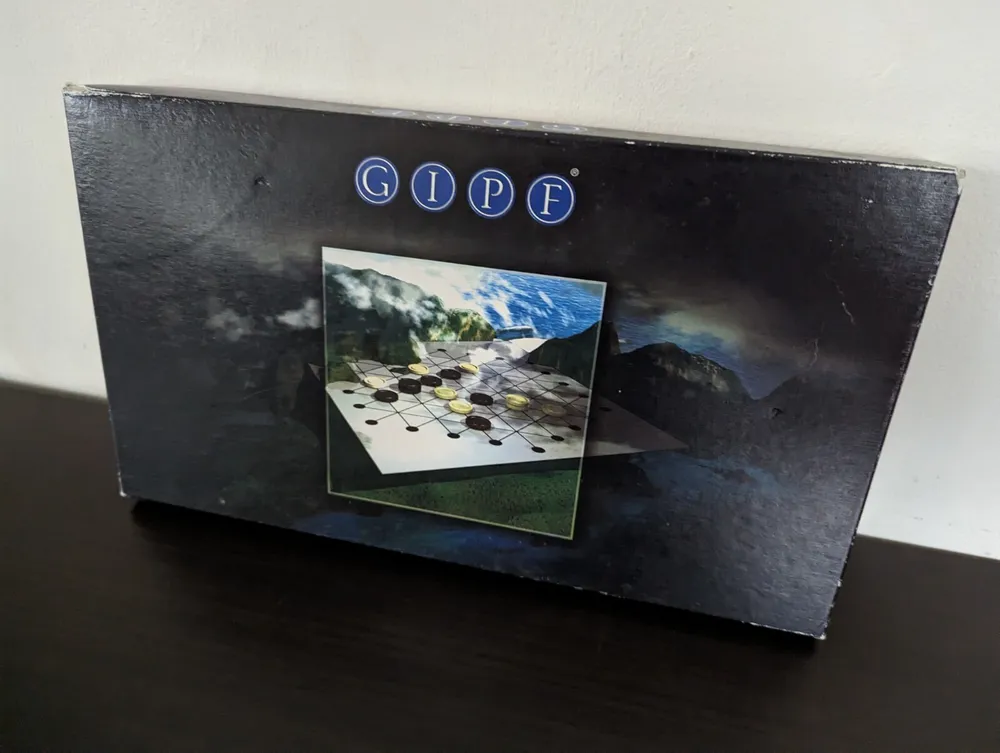GIPF (1996)
GIPF
GIPF is an abstract strategy board game by Belgian designer Kris Burm, and the first of seven games in his series of games called the GIPF Project. Burm started publishing games in the early 1990s, the vast majority of which were abstract games. He started work on GIPF in the mid-1990s, and by 1996, he had decided to publish it as part of a series of six games. The game was first published independently in 1997, but a few months after its initial release, Burm came to a partnership with a German publisher. The game and its successors in the GIPF Project have been released worldwide by a few publishers in the nineteen years since. The series is named after the first game, GIPF, and all the games take place on some form of hexagonal board and involve the diminishment of each player’s playing area.
Why is GIPF Popular?
GIPF is significant because it is the first game in the GIPF Project, an award-winning series of six (arguably seven) abstract games by Kris Burm. The game has won several awards, including the Mensa Select award for YINSH, DVONN, and ZÈRTZ. The GIPF Project games are considered an excellent starting point for people looking to get into modern abstracts, largely because of their accessibility and the fact that they can be played individually or used to enhance GIPF with more powerful pieces called potentials.
Game Components of GIPF
How To Setup GIPF
To set up GIPF, players start by choosing their colors (black or white) and placing one piece on each of the outer corner points of the hexagon, creating intersecting equilateral triangles. Each player then has 15 additional pieces to place during the game.
Gameplay Mechanics and Game Objective
– Pieces are placed on the outer dots and pushed into the board along straight lines.
– Pushing a piece can move multiple pieces in line with it.
– Pieces can be reclaimed if four in a row are formed and removed from the board.
– Optional use of GIPF potential pieces with special powers.
– Capture all three of your opponent’s GIPF pieces.
– Make your opponent unable to make a move.
Player Experience
Playing GIPF requires strategic thinking and careful planning. Each move must be considered from both an offensive and defensive perspective, as the composition of the board changes dramatically with each turn. Players need to manage their pieces efficiently, using the reclaim mechanic to their advantage. The game demands attention to the number of pieces left to play and the potential moves that can be made.
Pros
Cons
Personal Thoughts on GIPF
GIPF is ideal for players who enjoy abstract strategy games and are looking for a challenge that requires deep thinking. It is particularly suited for fans of games like chess or Go, where each move has significant implications for the overall game. The game’s unique mechanics and the option to integrate with other games in the GIPF Project series add a layer of complexity and replayability that will appeal to seasoned gamers. However, it may not be the best fit for casual players seeking a quick, light-hearted game.
We are supported by our audience. When you purchase through links on our site, we may earn an affiliate commission, at no extra cost for you. Learn more.

